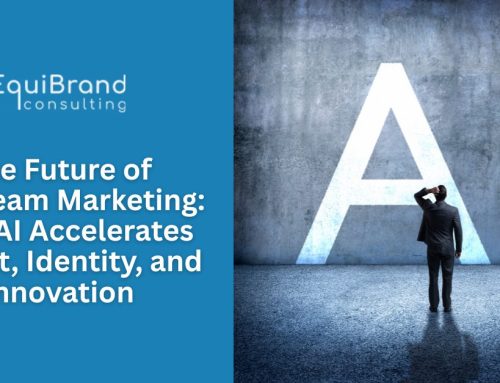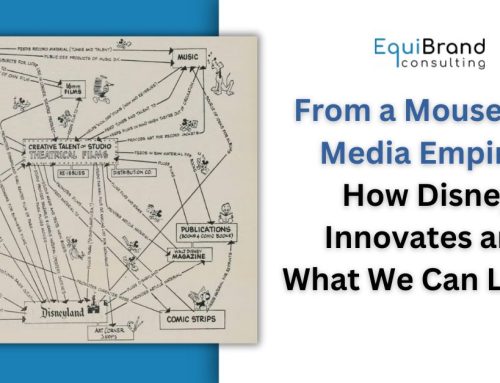
Creating a strategic brand advantage means understanding your customers better than your competitors. Deep insight into what motivates customers is the foundation of a successful brand strategy. One key ingredient to developing deep insights is the effective utilization of available market research tools. Below are 11 examples of innovative tools which can help take your marketing research process to the next level.
- Proximity/RTLS (real-time location system): Using connected devices in combination with Bluetooth, wi-fi and/or RFID, researchers can analyze asset and personnel movement throughout an organization. For example, magic bands are given out at Walt Disney theme parks which contain RFID technology that interact with beacons throughput the park. Disney can utilize this information to determine park traffic patterns, preferred rides, willingness to wait in queue and much more. Adding context to RTLS, such as weather, time of day and customer attributes further add to the richness of the behavioral data.
- Biometric Measurement: Verbal and overt responses represent a small portion of consumers’ true opinions. Tone of voice, facial expressions, eye movement and other biometric cues provide a valuable window into thoughts and feelings. Eye tracking, facial analysis and other tools have become readily available to supplement more traditional market research techniques. For example, Cambell’s Soup used biometric measures to understand in-store purchase behavior.
- GEO Location: As over 80 percent of United States consumers own a mobile phone, GEO location data is readily available to utilize for insight gathering. GPS coordinates are sent in real-time to a server where they are analyzed. Of course, respondents must opt-in to be tracked. Use cases include using geolocation data for attribution analysis, analyzing consumer travel patterns and much more.
- Prediction Markets: Predictive markets harness the collective intelligence of the crowd to help project current and future events. Predictive markets can be utilized with customers, employees, key stakeholders and others. For example, Best Buy used predictive markets to help capture leading sales and consumer preference indicators from employees.
- Virtual Reality: With entrants such as Oculus, Playstation VR and VR adapted smart-phones, virtual reality is becoming more accessible and increasingly powerful. Virtual reality places users in an immersive, responsive environment. Using VR, organizations can test with greater accuracy variables in design, customer service scenarios, user interface options and much more. For example, the promise of testing potential retail design experiences using a virtual room will yield deeper insights versus traditional concept testing.
- Content Analytics: With over 4.1 Million Facebook likes and 347.222 tweets sent every 60 seconds, the amount of content produced every day is staggering. Most importantly, this content is generated not just by journalists and bloggers, but by your customers. Text, images, video and sound can now be analyzed en masse using machine learning. For example, Chick-fil-A is using Amazon Web Services Comprehend to analyze user generated social content to identify food safety issues. IBM and Amazon each have their own own out-of-the-box natural language processing APIs as part of their cloud platforms.
- Feedback Kiosks: Obtaining feedback from your busy customers at point of purchase can be challenging, yet enlightening because of the highly representative sample and experience recency. In-store digital displays and customized equipment are a valuable method for obtaining a broad sample. Kiosks dedicated to single purpose market research are utilized by companies such as Ikea, Virgin Active and more.
- Aerial Research (satellites, drones, balloons): In combination with visual analysis, satellite research is used in analysis and forecasting. Retail can now predict traffic and associated demand. The public sector can use geospatial analytics to make policy decisions.
- Chalkboards: Low-tech options like chalkboards and white boards can help develop a personal relationship with your customers. Additionally, millennials prefer authenticity, and what feels more authentic than a chalkboard? In an effort to better understand its market, Lulemon famously placed chalkboards in dressing rooms where customers were able to provide feedback.
- Gamified Surveys: Survey fatigue plagues research effectiveness. One tactic to overcome lengthy or repetitive surveys is by using “research gamification”. Methods include utilization of avatars, basing questions on narratives, casino-like rewards, achievement badges and more. Instead of asking a respondent to select important attributes of product using a checkbox, brands can use a word cloud where participants can adjust the size of relevant words.
- Marketing Research IoT (Internet of Things): Connected machines and equipment provide real-time, actual customer and employee behavioral data. This data is helping to develop powerful insights for retail, manufacturing, services and more. For example, health clubs are tracking equipment utilization, providing subtle yet meaningful insights which help drive equipment purchase decisions and membership promotion considerations. Similarly, commercial real estate management companies like JLL utilize connected assets (lighting, chairs, etc.) in buildings to understand how tenants use spaces to make better development and investment decisions.
Organizations must continuously monitor and anticipate changes in customer needs. They must have a deep understanding of customer “whys,” vs. the “what’s” and “how’s.” It’s important to systematically obtain feedback from your customers, both current and potential, about potential needs and how these needs can be better met.
For more information on implementing these innovative techniques in your marketing research process and brand building efforts, please contact us.



















Follow EquiBrand